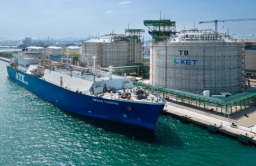-
KOSPI 2577.27 -2.21 -0.09%
-
KOSDAQ 722.52 -7.07 -0.97%
-
KOSPI200 341.49 +0.02 +0.01%
-
USD/KRW 1396 -2.00 0.14%
SK Gas eyes commercial operations of LNG power plant in 2nd half
Energy
SK Gas eyes commercial operations of LNG power plant in 2nd half
The S.Korean company has succeeded in the initial firing of the world’s first LNG/LPG combined cycle power plant, using LNG
By
Jun 04, 2024 (Gmt+09:00)
2
Min read
News+
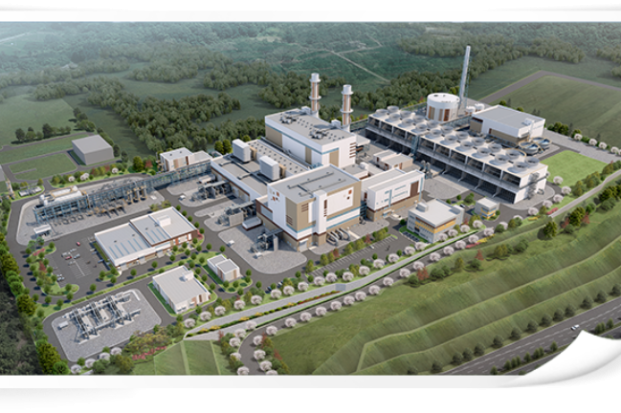
SK Gas Ltd., South Korea’s leading liquefied petroleum gas (LPG) supplier seeking to transform into a clean energy company, has moved a step closer to commercial operations of the world’s first liquefied natural gas (LNG)/LPG combined cycle power plant later this year.
SK Gas announced on Tuesday that Ulsan GPS (UGPS), its subsidiary operating the world’s first LNG/LPG combined cycle power plant in Ulsan, succeeded early last month in the initial firing of two gas turbines, each with a capacity of 400 megawatts (MW) and has been distributing the LNG-fired electricity to power girds operated by Korea Electric Power Corp., Korea’s state-owned utility company.
Since then, UGPS has been test-operating its facilities with LNG supplied from the Korea Energy Terminal (KET), SK Gas’ first LNG terminal, without any issue, moving a step closer to completing the energy parent’s LNG value chain, a key to its transition into an eco-friendly energy company.
UGPS, located in the coastal city of Ulsan, about 310 kilometers southeast of Seoul, is the world’s first LNG/LPG combined cycle power plant, using both LNG and LPG as clean fuels.
SK Gas spent 1.4 trillion won ($1 billion) to build UGPS expected to generate 1.2 gigawatts (GW), equivalent to one nuclear power plant, which is estimated to power 2.8 million households annually.
Every year, UGPS is projected to use 900,000 to 1,000,000 tons of LNG transported through pipes directly connected between the power plant and the KET, which completed its test operations in April.
Considering that the LNG terminal is located about 5 kilometers from the power plant, SK Gas will be able to maximize its power generation profit with low LNG delivery costs.
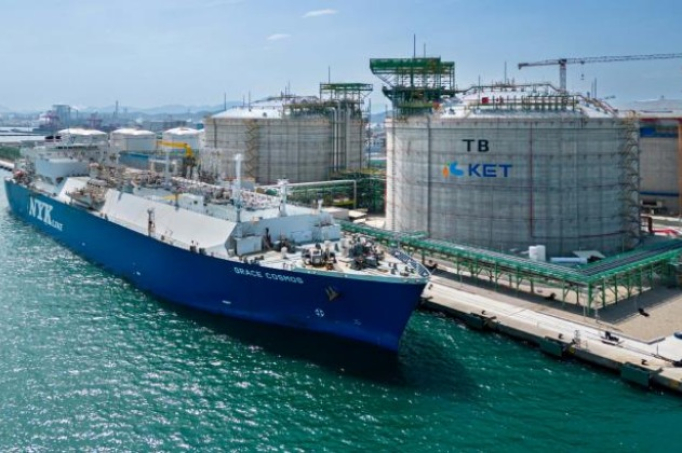
UGPS is designed to use the less-expensive LPG to fire the power plant when global LNG prices move upward.
SK Gas said it plans to test-fire gas and steam turbines at UGPS with LPG to commence commercial operations of the dual-fuel power plant in the second half of this year.
CLEAN ENERGY COMPANY
SK Gas has been expanding its LNG and hydrogen businesses as it seeks future growth from eco-friendly energy sources for carbon neutrality.
It aims to transform into an LNG company that imports, stores and supplies the clean gas from 2024 with an end goal to switch its business focus to hydrogen.
The company plans to produce liquefied hydrogen through the cold energy of LNG at low costs.
As part of the plan, it broke ground on UGPS in September 2022. It also built the KET jointly with Korea National Oil Corp.
Including the three tanks at SK’s hydrogen energy complex, dubbed Clean Energy Complex, near the KET, SK Gas will have a total of six LNG storage tanks with a total capacity of 7.2 million tons.
In April 2023, the company announced a plan to invest 2 trillion won in new businesses such as LNG.
Write to Hyung-Kyu Kim at khk@hankyung.com
Sookyung Seo edited this article.
More To Read
-
Apr 22, 2024 (Gmt+09:00)
-
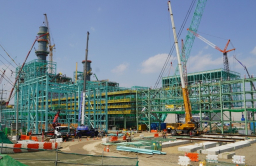 Carbon neutralityKorea’s SK Gas to invest $1.5 bn toward carbon neutrality by 2026
Carbon neutralityKorea’s SK Gas to invest $1.5 bn toward carbon neutrality by 2026Apr 27, 2023 (Gmt+09:00)
-
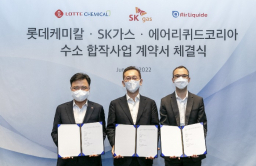 Hydrogen economySK Gas, Lotte Chemical to launch JV for hydrogen power generation
Hydrogen economySK Gas, Lotte Chemical to launch JV for hydrogen power generationJun 02, 2022 (Gmt+09:00)
-
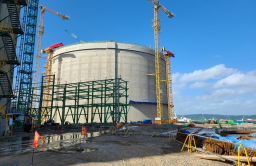 Carbon neutralityS.Korea’s SK Gas expands LNG, hydrogen biz for future
Carbon neutralityS.Korea’s SK Gas expands LNG, hydrogen biz for futureSep 22, 2022 (Gmt+09:00)


